
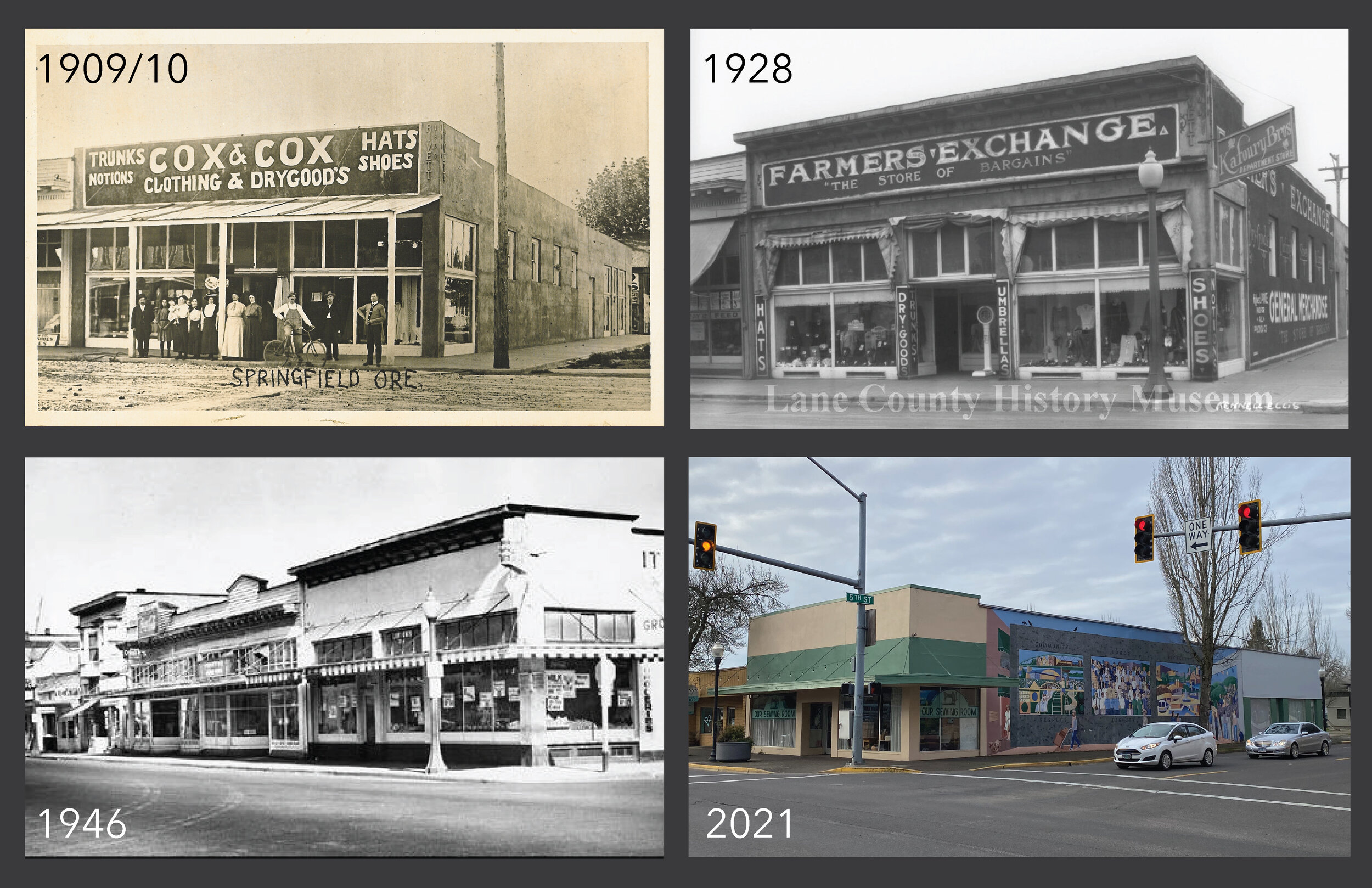


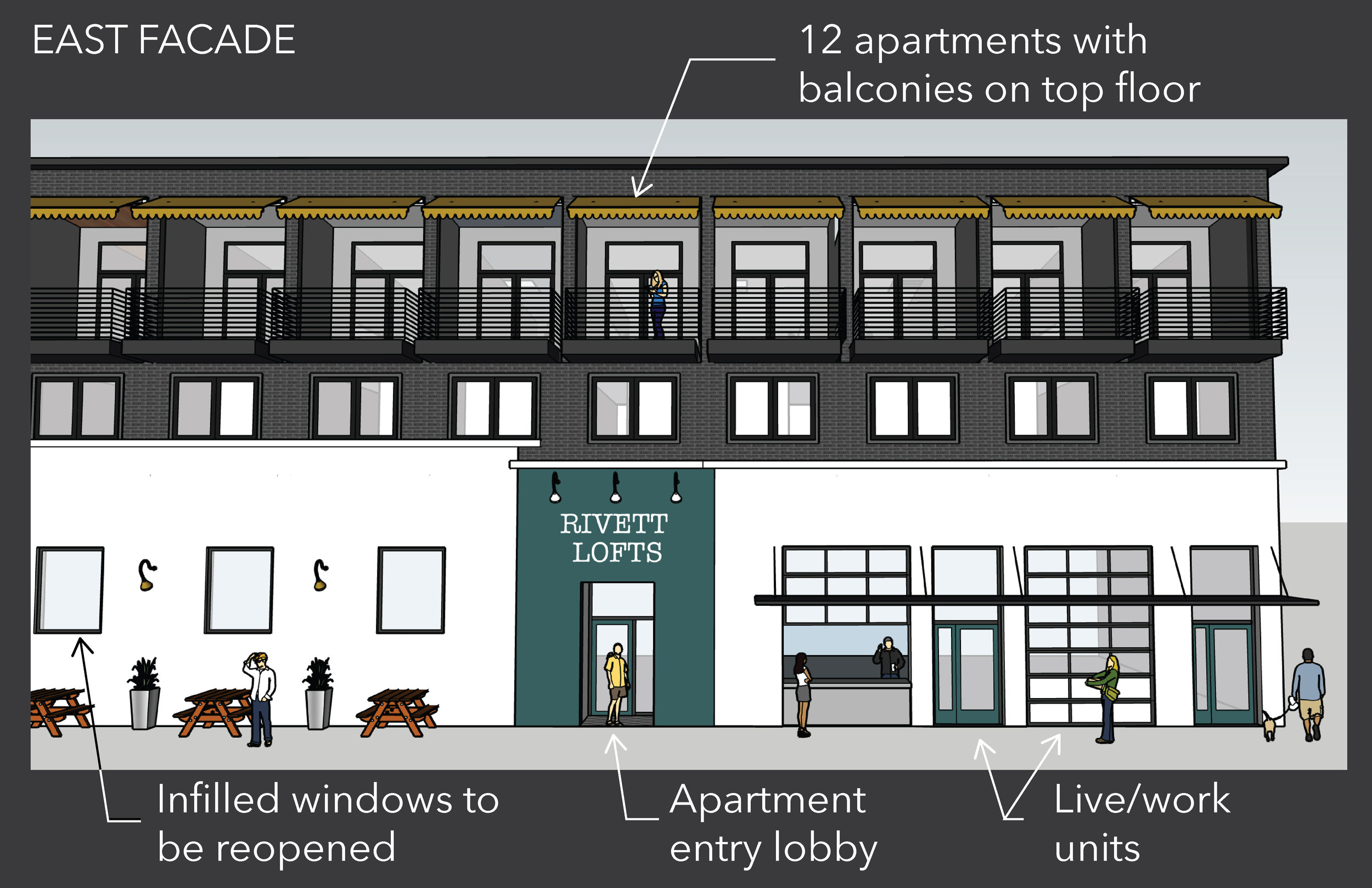
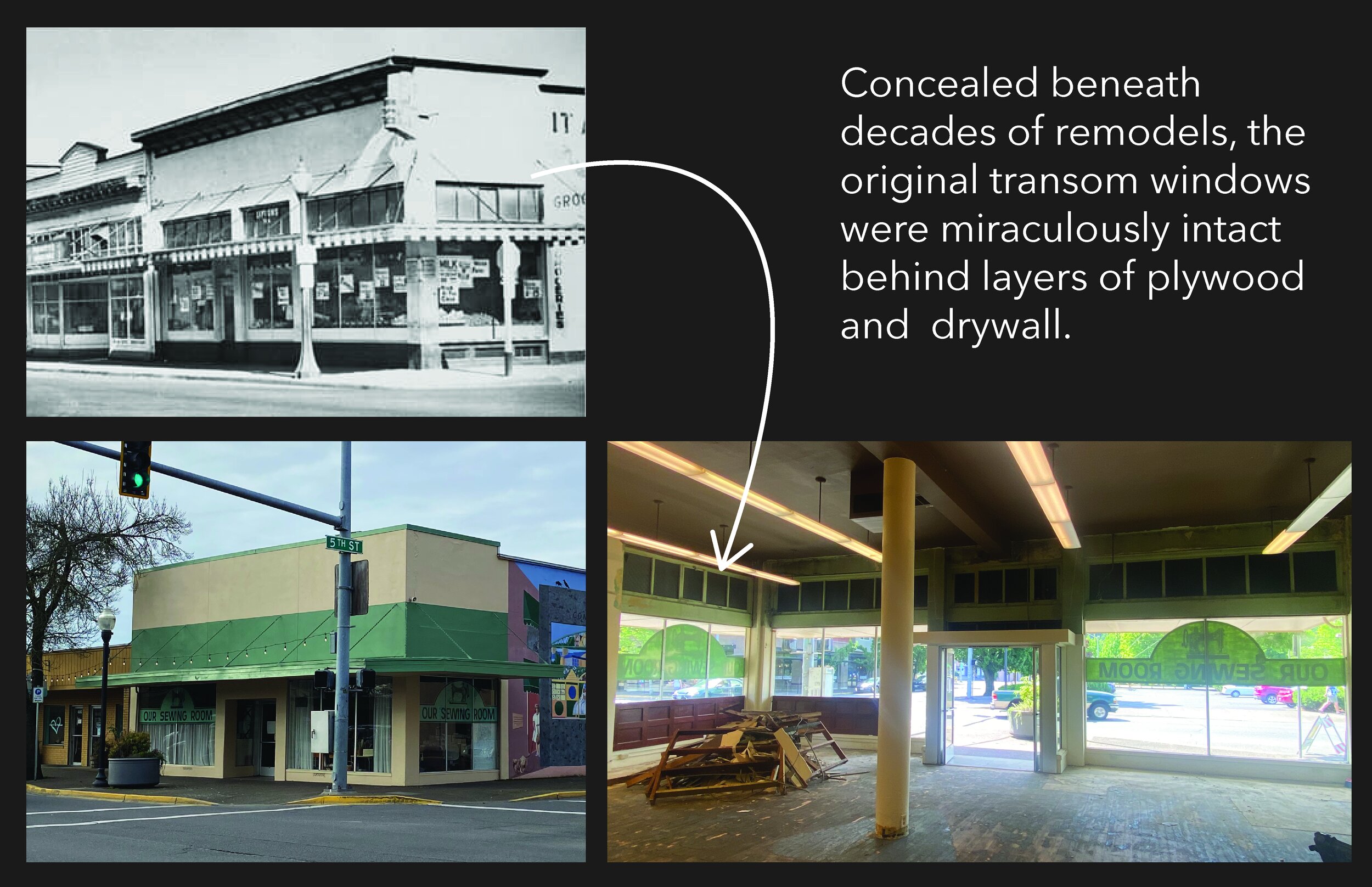
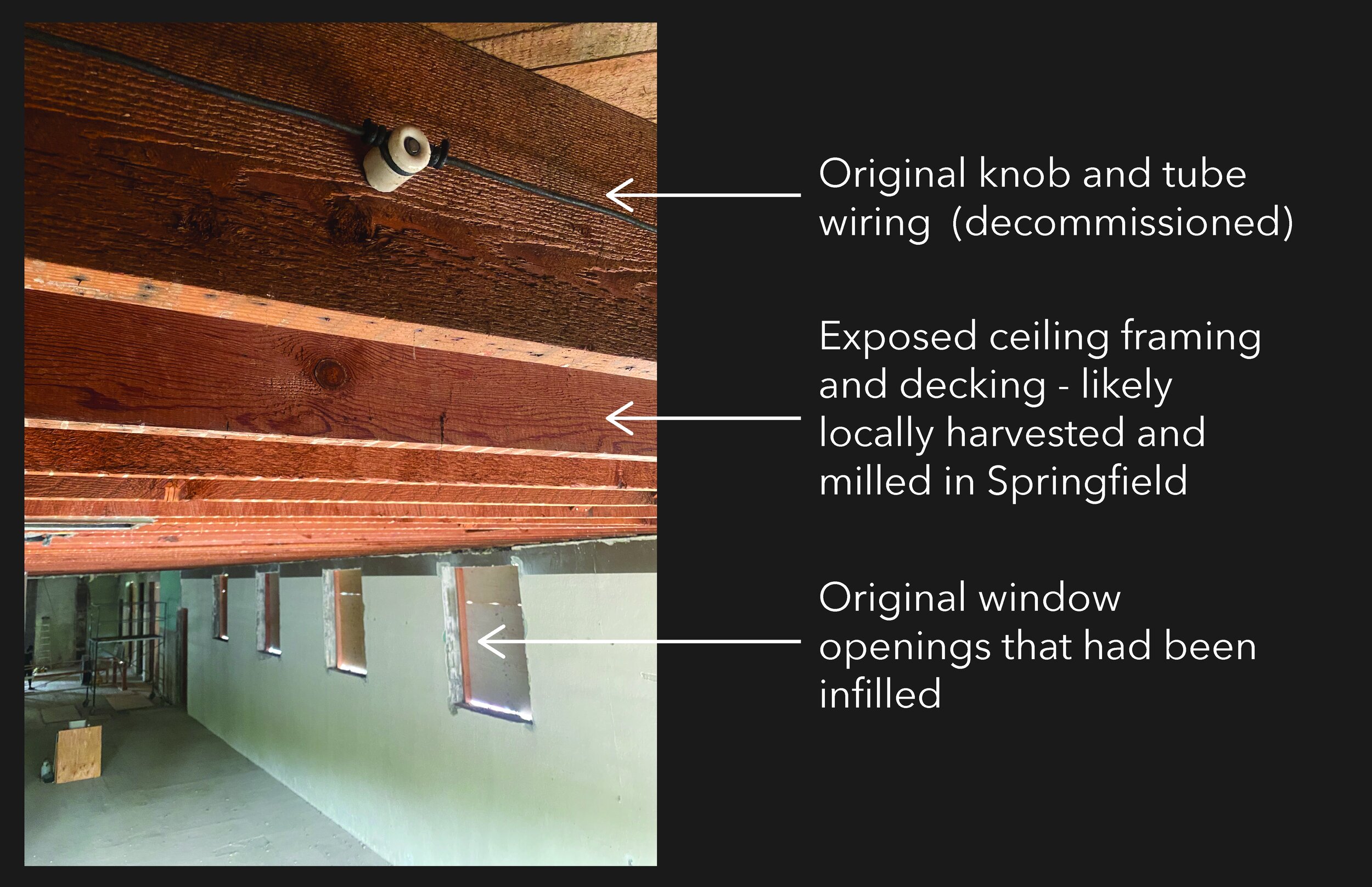
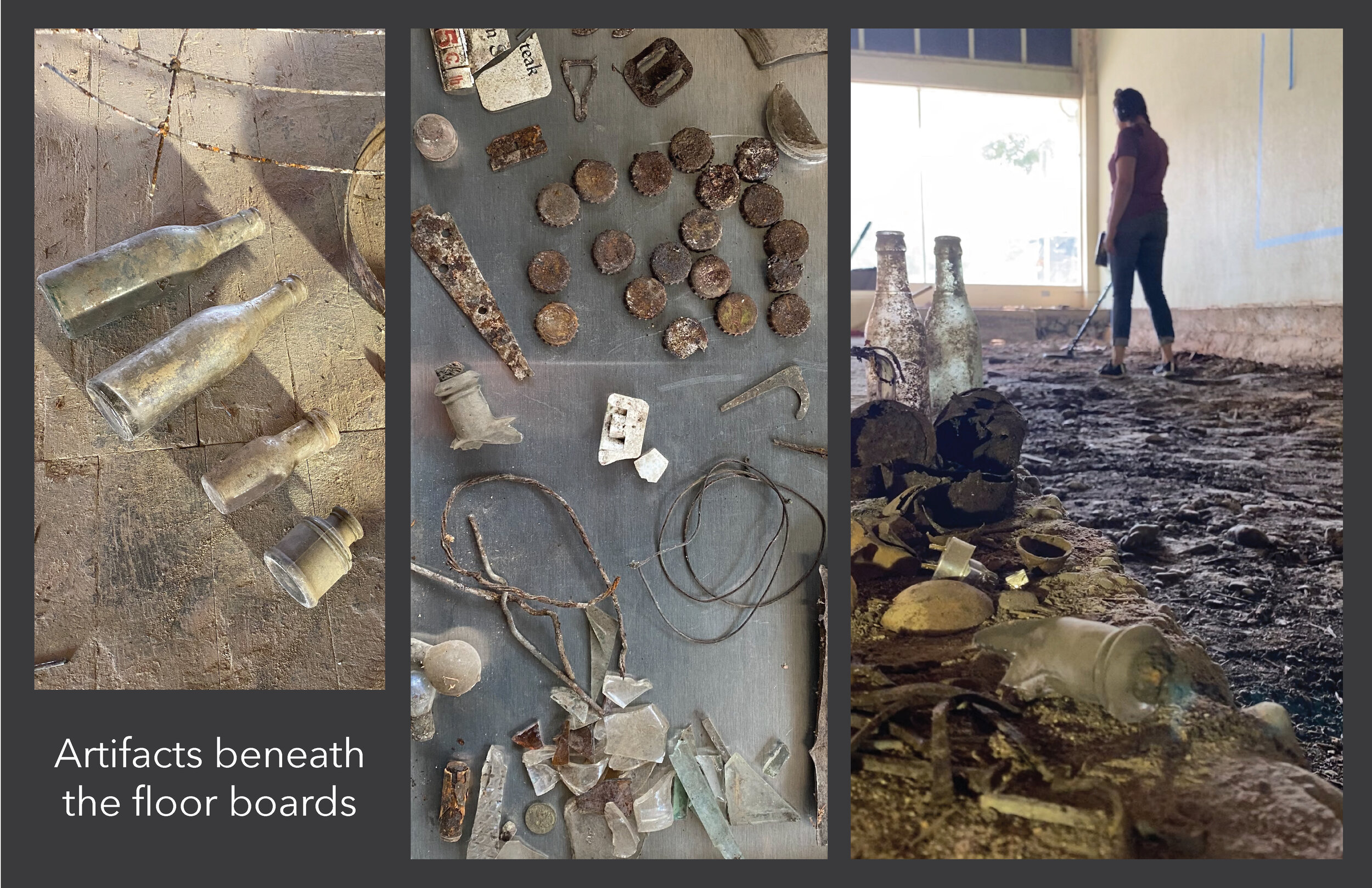
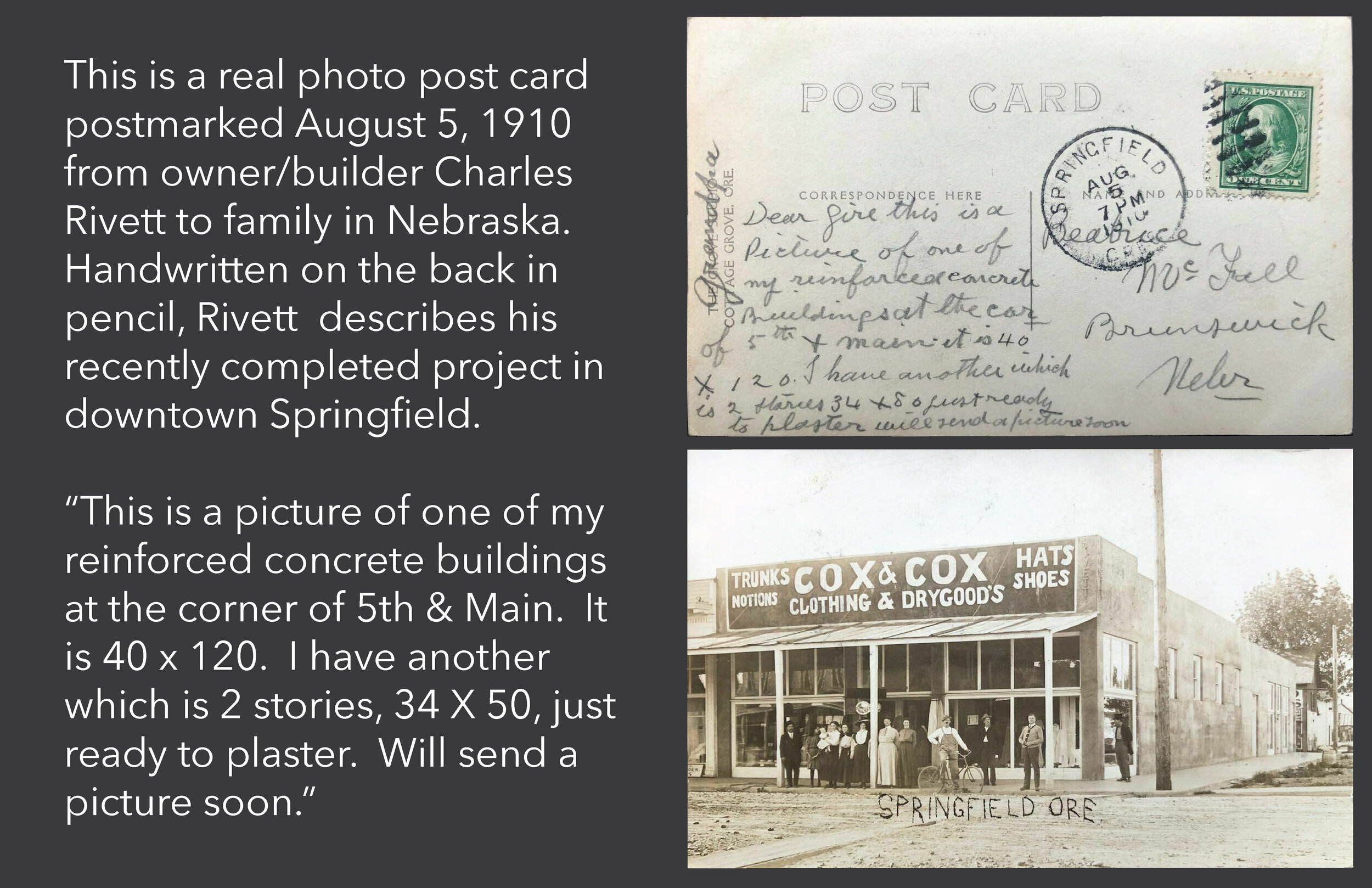
RIVETT BUILDING
A new era of commerce is underway for the historic Rivett Building in downtown Springfield. Originally built in 1909, this structure was one of the first concrete commercial buildings on Main Street. It was constructed by Charles Rivett (1850-1935), a contractor who moved to Springfield from Nebraska and had substantial impact on downtown infrastructure both as a private developer and as City Councilor. According to early 1900’s newspaper articles he is responsible for several blocks of buildings along Main Street, claiming to have built the first concrete building, elevator, tile fireplace, cement sidewalk, and even the first women’s public restroom in town. He excitedly wrote home about his ventures and talked with the press, eager to share his accomplishments: “the appearance of that end of town will be improved by this large two-story concrete structure” and “the entire building [has been] leased and the parties are anxiously awaiting its completion”.
After 112 years, the Rivett Building at 5th & Main will once again make a statement, but this time as a three-story building, with businesses and live-work spaces on the ground floor and twelve new apartments above. The original single-story building will be carefully renovated to reveal historic features that have been concealed for decades. The design will recapture the rhythm of the original façade by exposing the original window and door openings, including the historic transom windows which are astonishingly intact behind layers of plywood and drywall.
To allow for the construction of two additional stories above, new structural supports and footings will be inserted inside the original building. These shear walls and steel moment frames will carry 12 one-bedroom apartments, each lofted with the main living space on the upper floor to maximize views from generous 10’ deep balconies.
The project is the first of its kind in downtown Springfield, combining adaptive reuse AND new construction. There have been plenty of other remodels of historic Main St. buildings, and a few new construction projects, but none that actually preserve/resurrect the existing historic fabric while introducing new square footage through modern structural intervention.
Springfield was founded around the timber industry, and the historic buildings in downtown are a time capsule of that era. Artifacts of construction and decades of use have been uncovered within the floor and ceiling cavities, including old soda and apothecary bottles, an early 1900’s inkwell, shipping crate boards, and even remnants of a previous building foundation. The original wood framing and decking, which will remain exposed as the ceiling in the new design, were likely locally harvested and milled by workers whose hands touched nearly every building project of that time.
Springfield is undergoing a revitalization and it is critical to protect the historic fabric of the city in manner that is compatible with future growth & development. This project is a demonstration of how urban infill can be achieved by building upward, without losing the architectural context and character that makes downtown special and unique.
